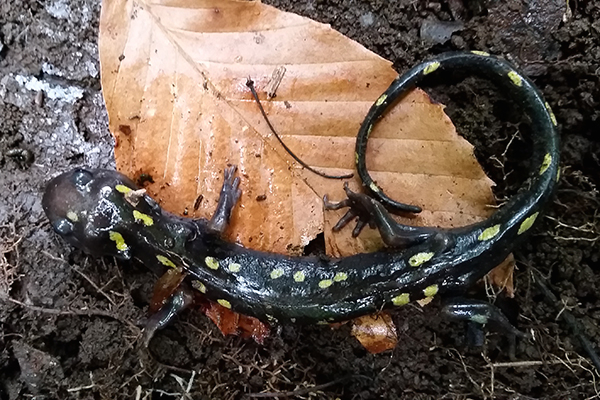It is always interesting to figure out the age of giant trees on your property. Doing so accurately is not always easy.
At the edge of the field behind our office is the Old Oak. The famous Old Oak. It has been written about and photographed on this blog before. Since I began working here in the spring of 2018 I have always heard about ideas to accurately age this enormous white oak. Foresters are occasionally asked by landowners how old they think a large tree on their property is. I am always hesitant to hazard a guess because of how difficult that can be. I’ve aged 1” diameter black spruce in Adirondack swamps that were 80 years old. I’ve counted the rings on 48” diameter, 110’ tall white pine just a few hundred yards away that were only 100 years old.

The easiest and most accurate way to age trees is with a tool called an Increment Borer. It is basically a large, hollow hand drill that you bore into the center of the tree with. You then extract what is called a core. Depending on how well you’ve done at estimating the center of the tree, the species, and the individual tree, it should be fairly easy to count the growth rings to determine the age. During my time as a Timber Cruiser in the Pacific Northwest I aged perhaps a thousand trees. These were all softwoods though. Softwoods no bigger than 24”. Not a hardwood. And certainly not a 72” white oak.
My co-worker Kris and I decided to grab the increment borer and give it a shot anyways. We knew there was no way we could get anywhere close to the center of that tree at its base, so we decided to climb up to the first fork. Here the diameter was maybe only 40”. We could at least get somewhat close. The problem was we couldn’t get through the inner bark. Usually you have to apply a bit of pressure to start, but nothing like this. We tried a couple other spots with the same result. Finally we managed to find two spots where there was some rot where we could get started. We extracted the cores. They were useless. The angle of the growth rings was completely off and the cores could not be aged.


What else could we try? We could cut down the tree and count the rings that way. That is a terrible idea. There are extra long borers out there, but there is no way we could get one of those things in that rock posing as a tree. Maybe I just don’t have enough experience boring giant hardwoods. I don’t think zero experience is enough experience. Perhaps not knowing only adds to the mystique of the Old Oak. No, I don’t buy that.
It is possible old deeds of the property refer to the tree as a boundary reference point. At least this would give us some idea. Maybe we could cut up a recently fallen limb. We would at least know a minimum age. We need to figure out something. Is it 200, 300, 400 years old? I want to know how many winters the Old Oak has seen.





